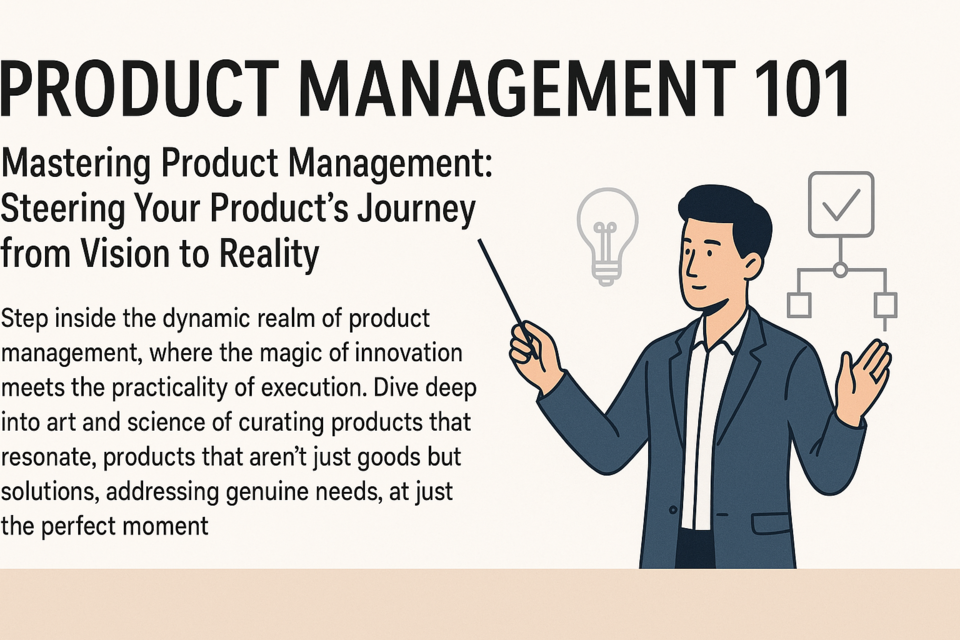Depending upon the type of business you have developed you may encounter issues with patents, copyrights, trademarks, and trade secrets. These type of agreements cover the licenses and requirements for materials and their use and development of products and services. When you are developing your business you have to determine many factors about your intellectual property. To determine the type of licensing requirements you may have you have to determine, Is your idea original? If it is how will you protect it? What type of Intellectual Property Protection will you need?
In today's growing market protection for intellectual property becomes increasingly important and sometimes expensive. You should ensure you have protection in place if you intend to market a new product and competition exists in your market where a similar product is manufactured. International protection begins at home but you must also have protection in other countries. A patent in one country does not protect your product in another country. Intellectual property is important to protect your developments to gain a competitive advantage in the marketplace by prohibiting others from using your ideas.
There are many ways to protect your intellectual property. The most common are Patents, which are the right to exclude others from making, using, or offering for sale the invention you have developed. Copyrights, which are original works of authorship that include software. Trademarks, which are a word, symbol or device that identifies the source of goods such as a company logo. Trade Secrets, which are secret information that gives an owner a competitive advantage. Such as the secret recipe to Coca Cola.
Patents offer the right to exclude others from making, using, selling, or offering for sale the invention. US patents last 20 years from when application filed with the United States Patent Office. Patents and require that the idea must not already be in the public knowledge or in public use. The issues related to patent applications include review of existing patents or similar devices, determining the life span of the invention, and whether a short lifespan would make a patent impractical or would disclosure of a patent give an advantage to competitors. Also you have to determine of it may be better to hold the information as a trade secret. You must file the U.S. application within one year of public disclosure of the invention.
Copyrights provide exclusive rights to a copyright owner for reproduction, public display, or derivative works. Copyright protection begins from the date the work is created and exists in a completed form. Copyright must be assigned and applied for. Many copyrighted works are indicated by the symbol � to show it is protected. To provide the best protection for your works it is best to register the work with the US government. This registration allows you to recover statutory damages.
Trademarks are used to differentiate one product from another such as a Reebok shoe from a Nike shoe. Some products may have multiple trademarks such as symbols and signs. Trademarks can protect names, slogans, shapes, distinctive packaging, shapes, or sounds.
Trade secrets are process or product components. Trade secrets offer measures to keep it secret and protected the secret by law.
We will discuss the four of these further:
Patents
Patents cover inventions such as chemicals, mechanical inventions, electrical inventions and other similar tangible products. Chemical inventions may be new compounds, new pharmaceuticals, new synthetic materials, or items such as pesticides, fertilizers, or adhesives. Mechanical inventions include those items which are mechanical in nature such as gears, engines, or common household items such as seals and locks or dishwashers. Electrical inventions include items such as circuit boards, switches, or lasers. In some forms computer software can be patented. Patents only require that the invention is different in some way from the invention that existed before it. The patent owner can protect themselves from others using, selling, or making the same invention during the term of the patent.
In order to obtain a patent an entrepreneur files an application with the U.S. Patent and Trademark Office. Full protection begins for your invention after the U.S. patent office determines your invention is patentable and will be patented. Each patent application is unique and has specific requirements the inventor must submit these requirements include:
-
Drawings and schematics of the invention
-
A description of the invention describing the specifications related to the drawings
-
The claim you ascertain as to why the invention is different
The coverage of the patent is based on how you explain why your invention is different you must explain why your invention is novel and unobvious. To qualify for a patent your product must not be similar to previous invention.
The process to apply for a patent are often complex you may review the requirements at the U.S. Patent and Trademark Office web site. Patents come in three forms utility patents which is a protection for a technological advance and innovation. You can be granted the patent for the improvement of a product or the original manufacture. Design patents which cover the new design for manufactured article. The shape or formation of the design can have no functionality other than aesthetic. Or, a plant patent which affords protection for anyone who invent service covers a distinct new plant variety that has been reproduced by grafting or selective cuttings.
Because of the complexity of the patent application process it is advisable to seek and attorneys guidance. This individual will do a search for existing work which is similar. They will complete and file a patent application which includes a description of the invention accompanied with drawings, plans are diagrams, and are accompanied with a specific claims that indicate the scope of the protection that you are seeking.
Patent examiners will determine if your work may receive a patent. Which will require the following in relation to your application:
-
Your work must comply with patent writing rules
-
Your work is patentable
-
The patent will enable you to implement the invention
-
Your invention is useful, novel, and inventive
-
All claims made must be supported
Once reviewed the examiner will determine if your invention is patentable. If it is the one issue a notice of allowance and while an application is pending, a notice of "patent pending" can be placed on marketing materials that use.
You may apply for a provisional patent. Provisional patents are offered for utility patents designed as a simpler and less expensive way for inventors to get an application on file and begin the process of protecting their invention. Provisional patents allow for filing without formal patent claims or disclosure statement. This gives the inventor time to develop and fine tune the invention while protecting as they work.
Patents are subject to the payment of maintenance fees to maintain the patent in force. These fees are due at 3�, 7� and 11� years from the date the patent is granted.
Copyrights
Copyrights provide the creators of works and their heirs for their successors rights under copyright law. They hold the exclusive right to use the work based on their terms. They can restrict or allow others to reproduce the copyrighted materials. Copyright infringement does not always require copying each word. The protection is provided for generalizations of the basic premise.
Copyrights are used to protect architectural works, motion pictures, sound recordings, musical works, pictorial works, and graphics. Copyrights are used to protect unauthorized users from copying the work, changing the work, distributing the work publicly, or displaying work publicly.
A creative work is considered protected by copyright law as soon as it exists. It must be original and in a fixed tangible form. Original means that was independently created by the author and has a degree of creativity. Fixed in a tangible form means the work is permanent and stable insufficient form permitted to be perceived, reproduced, or communicated.
Copyright protection establishes a public record of the ownership of the work that allows for the right holder to bring a lawsuit for copyright infringement and allows them to claim damages. In order to register a copyright location must be made with the U.S. Copyright Office and a filing fee must be paid. Once the copyright is secured the owner may affix a copyright notice to their work. A copyright notice should contain these three elements, The symbol or the word "Copyright", the year of first publication, and the name of the copyright owner.
If you hold a copyright and the copyright is infringed you may recover special damages. This provides protection for your work. In order to register for copyright complete the required forms and send them to the copyright office.
Trademarks
Trademarks are used heavily in marketing and advertising applications. They provide you protection for any word or symbol used on your goods or in conjunction with your services. These include colors, geometric shapes, or groupings of shapes that make your business distinctive such as "Subway" or "Crayola".
You want to verify no other company is using the mark and already has it registered. This prevents you from confusing your customers and reprinting paper goods, stickers, and other advertising materials if you discover your mark is currently or previously used. With millions of companies in existence it is quite possible your idea for a trademark is similar, and you want your individuality. When registering your trademark it is recognized in all 50 states provided it is used in interstate commerce. A trademark must be sold with your business. Unlike a patent or copyright it cannot be sold by itself it must be sold with the business. The trademark is tied with an expected level of quality or service.
Trademark rights are territorial, meaning that protection in one country does not mean that protection exists in any other country. Each country has its own specific requirements for use and registration that must be met in order to obtain trademark protection in that country. A US trademark registration protects a trademark only in the United States.
Trademark ownership is established by use of the mark in connection with goods or services. In "first to use" countries, rights exist upon use in commerce, although a registration provides important benefits to the trademark owner.
Trade secrets
A trade secret is in the formula, device, or information that gives the owner of the secret the opportunity to have a marketing advantage over its competition for those who do not know the secret. The trade secret cannot be public knowledge. Trade secrets are protected by law when reasonable actions are taken to keep the secret a secret. It protects the secret from being improperly acquired. The unfortunate fact is that unlike patents, trade secrets can be reversed engineered and then no longer a secret. Trade secrets can protect things a patent cannot for instance, knowledge. A trade secret may be the knowledge either business or technical that produces a business advantage over competitors. Process secrets, formulas, recipes, marketing programs and working know-how can all be trade secrets. Unlike patents, trademarks, and copyrights, there is no formal government procedure for obtaining trade secret protection. Trade secret protection is established by the nature of the secret and the effort to keep it secret. The difficulty lies in preventing employees from releasing the secret. These are the major caveats in maintaining secrecy.
-
You should take precautions to prevent unauthorized parties from entering the areas where trade secrets are used. This includes security, safes, door lock, fences, escorts, and establishing off limits areas.
-
You should develop confidential non-disclosure agreements for employees, suppliers, and consultants.
-
Make sure your employees understand their commitment to keep trade secrets a secret and keep information confidential.
-
Mark trade secret documents as such, stating "confidential" or "trade secret" on the document and store these documents in controlled limited access areas.
Protecting intellectual property
As a business owner you want to protect your intellectual property and you may do so through a variety of mechanisms. There are many intellectual property agreements that form the fundamental forms of protection for your work. These include nondisclosure agreements, employee contracts, and contracts for your consultants or contracted workers. You should protect your intellectual properties from conception to protect your ideas as they grow. Intellectual property agreements define the obligation to employees and contractors during the stages of development of new products or processes. Many ideas can be protected including marketing programs, new ideas, identities and new product lines. Protecting the property is especially important for technical developments.
Disclosure agreements and employment contracts should always be made in writing and signed before work is begun. You are responsible to place workplace controls to prevent the dissemination of your business information.
Non-competition clauses
Non-competition clauses are clauses where an employee agrees not to compete during their employment with the company and for a period after leaving the company. This means that they will not take a new job with a competitor or provide inside information to another company.
Employee and Consultant Contracts
These types of contracts or agreements define the task for which the employee is hired and determine what function they will perform in the design, or development of a product or service. A contract should explain why the employee or consultant is hired, the expectations of what services they are to perform, what they may be exposed to as far as company information that is proprietary or confidential and ultimately what services they are to provide in the form of innovation or intellectual property. You should own whatever work they develop under your employment.
Non-disclosure agreements
Non-disclosure agreements or Confidential Disclosure Agreements are used when knowledge of information or ideas have a specific value and you do not want them to be revealed or that you must reveal sensitive information in order to complete the work. These types of agreements are used commonly in the business arena in the development of new products, when hiring consultants, when determining design, and when asking suppliers for supply bids.
These types of clauses in contracts are essential in the development of your products or ideas to protect your business.
Costing
You may want to assign costs for the use of your Intellectual property and may do so through licenses, royalties, fees, subscriptions or other charges to the users. Under licensing the user has the right to use a property in exchange for monetary compensation.
Licensing
Negotiating a license is sometimes difficult because you must assign a dollar value to the intellectual property. Some things to consider are the cost you have in research and development, the cost in design, the cost of advertising and marketing, legal costs, and associated administrative overhead.
Royalties
Depending on what product you are trying to market you may want to charge royalties. Royalties range from 5 to 25% depending on the exclusive rights provided. Royalties are based on a lack of acceptable substitutes, the extent of patent or trademark use, the relative profit an individual may receive and the evidence of customer preference.
A summary chart for Intellectual Property Concepts including their relative costs, actions, and pros and cons for use is provided here so you can more easily identify the requirements and benefits of intellectual property.
|
Intellectual Property |
||||
|
Patents |
Copyrights |
Trademarks |
Trade secrets |
|
|
Protection and uses |
Used for inventions or innovations |
Covers works of original authorship |
Protects the names of companies and their products or services |
Used to protect secrets of development |
|
Government review requirements |
Us this is an extensive management process to receive a patent |
Yes this is required |
Yes this is required |
Not required |
|
Cost |
Typically 10 to 20 thousand dollars |
Inexpensive and generally under $500 |
Less than $3000 |
Depends on the number of trade secrets |
|
Term of protection |
30 years from the date of file |
100 years |
Indefinitely |
Indefinitely |
|
Protection start |
May take 3 to 5 years |
Immediately |
Immediately |
Immediately |
|
Pros |
Provides fraud protection |
Inexpensive |
Minimal cost |
Covers things not covered by patents and requires no government review |
|
Cons |
Requires a lengthy process and government scrutiny |
Protection is not extensive |
Only protects product names |
Cannot be used as a protection if the secret really is not a secret |
Enforcing your Patents, Copyrights, Trademarks and Trade Secrets
As the owner of any of these rights you are responsible to protect them. The government performs enforcement that you are responsible for monitoring. There are many government entities which ensure piracy and counterfeiting are minimized. If any of your rights are infringed you will send a cease and desist letter to the individual involved. The next step if the infringement is maintained as an alternative dispute resolution. This is typically a slow process that is less expensive compared to court costs. As a small business entrepreneur there are many associations which provide resources and information related to protecting your rights as an owner of a patent, copyright, trademark, or trade secret.
In some cases if you are unable to stop the infringement you may be able to license your product to the infringer and gain some financial benefit.
The criminal penalties for willful infringement include imprisonment or monetary fines, and seizure and destruction of infringing goods and equipment used in their manufacture.
You may contact the National Intellectual Property Rights Coordination Center managed by the U.S. Immigration and Customs Enforcement (ICE) Homeland Security Investigations (HSI). They are responsible for investigating of the incidents, interdiction of counterfeit are pirated goods, and providing outreach and training related to your intellectual property.
Summary Reminders and Takeaways
Patents, Copyrights, Trademarks and Trade Secrets cover the licenses and requirements for materials and their use and development of products and services. These intellectual property protections protect your business interests. As an entrepreneur you should know how to protect your business and understand the risks of not protecting what you have worked hard for. There are many ways to protect your intellectual property. The most common are Patents, Copyrights, Trademarks and Trade Secrets. As a business owner you want to protect your intellectual property and you may do so through a variety of mechanisms. There are many intellectual property agreements that form the fundamental forms of protection for your work. These include nondisclosure agreements, employee contracts, and contracts for your consultants or contracted workers. Intellectual property protection is just as important as insurance from a business perspective. By using patent, copyright, trademark, and trade secret protection you provide the legal protections to help your business flourish.































